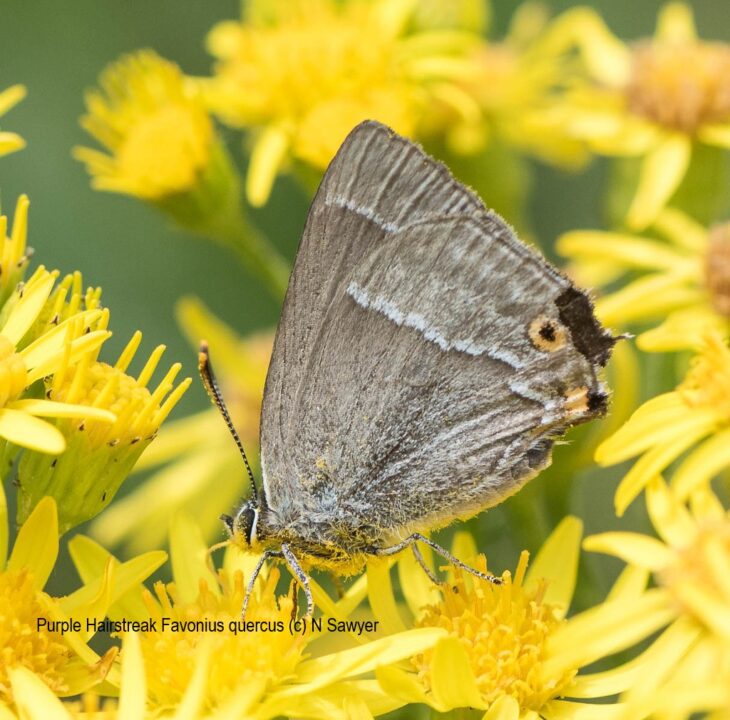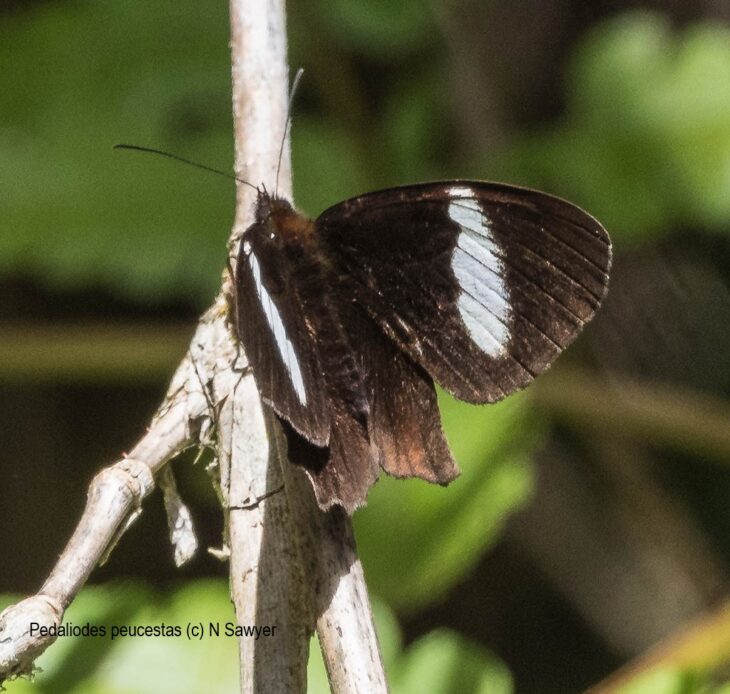Expectations
iNaturalistUK user, Nigel Sawyer, provides his thoughts on how we can manage and perhaps increase our expectations of our observations being identified.
Pesaliodes peucestas - Ecuador
Auto suggestions are only a starting point
I guess when we first start using iNaturalist our expectation is it will help solve all of our identification mysteries and confirm those identification of which we are sure of. The reality of course is a little different and in some cases the autosuggestion is simply wrong (for example an insect cannot be a Black-headed Gull which has been suggested) although this is the exception rather than the rule. Using the autosuggestion is a good starting point but it is also useful to check the suggestions against other sources (books or other websites if available) before committing to a species identification although for UK sightings the genus suggestions tend to be correct.
There are of course times when the autosuggestion struggles and one problem area for me has proven to be small (3-4mm long), orange flies for which a number of families and species get suggested but I have no idea which one might be correct even after checking other sources!
Another initial expectation is that all of our submissions will get to be Research Grade but given the nature of the real world that is most unlikely.
When I travel abroad (especially South America) many of the insects are totally new to me and although some countries have good coverage for certain insect groups (butterflies and dragonflies seem pretty well covered for many countries) having the autosuggestion on iNaturalist can be very useful in helping point me in the right direction.
Variety of community feedback
When it comes to the confirmation of a species or a suggestion from a human identifier I have found the feedback to be anything from zero to brilliant with an explanation as to why the identifier thinks the species is species X, Y or Z. In my experience certain groups have an active community, often by countries such as butterflies in Ecuador and Odonata from Turkey, where identifications are quick and from experts in their field. I must admit it was a bit of a thrill having feedback from Keith Willmot, the world expert, on my Ecuador Adelpha butterfly sightings and something I had not expected.
Sharing your observations
Talking of Ecuadoran butterflies one of the unexpected results of uploading images onto iNaturalist was a request for some of my images to be used on a specialist Ecuador butterfly site ( https://www.cotacachi.eu/en/ ). Of course, I was delighted to say feel free to use the images because one reason my records are on the iNaturalist is to help spread knowledge.

Purple Hairstreak - Favonius quercus - Richmond Park
Species coverage expectations
My original expectation was there would be good coverage of all insect groups but there are groups with a limited number of (especially for world-wide coverage), if any, experienced identifiers feeding back on the images uploaded. Three such groups are the Hymenoptera, Tachinid flies and the Leaf (and other) hoppers. One reason for this at a UK level is likely to be because the UK national recording schemes recommend using iRecord rather than iNaturalist. It does however lead to gaps in iNaturalist coverage especially if a user only looks for Research Grade records.
Another major “gap” are the Neo-tropical moths which given the number of species recorded is not really a surprise. In Ecuador most of the birding hotels run a moth trap at night mainly to attract birds to a free feast in the morning but they are very productive for moth and a few other insects such as the large Bush Crickets and other predatory insects.
Research in advance
Before having high expectations of obtaining identifications it pays to do your research first (i.e. checking iNaturalist) before you go to a country or upload images of certain insects so you should be able to determine what level of expectation you should have when it comes to your own records.
Before I went to Ecuador I had checked some of the sites we were visiting on iNaturalist and found that many of the moth sightings were to genus level only so although I did get some sightings to species level in the main I was happy to get them to genus level.
Select the best image
It is also likely that for some insect groups in particular that a species identification will not be possible from a single photograph. Shots from different parts of the insect are often required and you can almost guarantee the required angle is the only one you did not get a shot of! However, you do learn from these suggestions and the next time will often try to get a shot from the right angle.
I think I should also point out that if upload really poor quality images (low resolution or subject a small blob or unsharp images) you cannot expect a full identification. When trying my hand at being an identifier I looked at one image that was meant to be of a butterfly and although there was plenty of foliage there was no sign of the butterfly. I also realised identifying even common butterflies such as Meadow Brown and Gatekeeper from photographs is not always as easy I thought it would be!
So, to summarise, after uploading decent images to iNaturalist hope for the best but do not always expect to get feedback or to have your sighting making it to Research Grade! We all need to manage our expectations.
You may also be interested in reading Nigel’s blog post Submitting the best photos for your observations.





Comments
Add a Comment